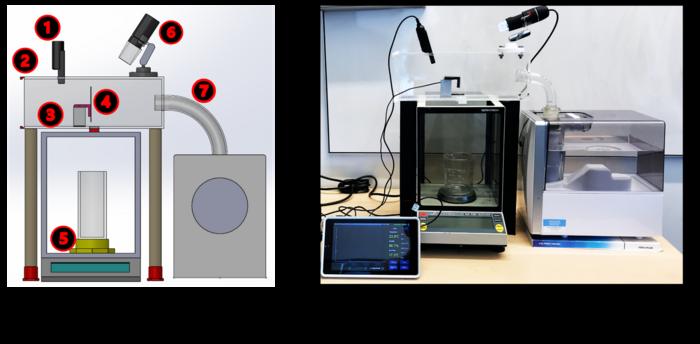| Aug 28, 2023 |
Researcher finds inspiration from spider webs and beetles to harvest fresh water from thin air
(Nanowerk News) A team of researchers is designing novel systems to capture water vapour in the air and turn it into liquid.
|
|
University of Waterloo professor Michael Tam and his PhD students Yi Wang and Weinan Zhao have developed sponges or membranes with a large surface area that continually capture moisture from their surrounding environment.
|
 |
| Fog harvesting-setup. (Image: University of Waterloo)
|
|
Traditionally, fresh water for consumption is collected from rivers, lakes, groundwater, and oceans (with treatment). The current technologies Dr. Tam is developing are inspired by nature to harvest water from alternative sources as the world is facing a serious challenge with freshwater scarcity.
|
|
“A spider’s web is an engineering marvel,” said Tam, a University Research Chair in the field of functional colloids and sustainable nanomaterials. “Water is efficiently captured by the web. The spider doesn’t need to go to the river to drink, as it traps moisture from the air.”
|
|
Similarly, Namib desert beetles have no easy access to water but acquire water from thin air by leaning into the wind to capture droplets of water from the fog with their textured body armour. This allows the moisture to accumulate and drip into their mouths.
|
|
Tam and his research group are engaged in biomimetic surface engineering for sustainable water harvesting. One technology Tam is designing is called atmospheric water harvesting. To mimic the beetle’s unique surface structure, Tam’s research group is designing a similar surface structure using a cellulose-stabilized wax emulsion to fabricate surfaces that attract tiny water droplets while swiftly releasing larger ones.
|
|
Tam is working with net zero carbon materials, such as natural and plant-based materials, to develop sustainable technologies. His research group is developing technologies that capture and repel water droplets by harnessing the power of interfacial science and nanotechnology. He has successfully developed superhydrophobic and waterproof paper. He is also engineering a smart and tunable surface that captures water from the air and dehumidifies it with minimal energy consumption.
|
|
The next step is to develop a scalable process to engineer such surfaces.
|
|
Solar evaporation systems directly harvest solar energy, absorbing water and generating fresh collectible vapour through evaporation. Unique mushroom structures inspired the smart biomimetic structural designs for solar evaporation.
|
|
The proposed freshwater generation systems are inexpensive, energy-efficient, and environmentally friendly.
|
|
In a recent publication in Nature Water ("Biomimetic surface engineering for sustainable water harvesting systems"), Tam and his team discuss several promising new water collection and purification technologies.
|

